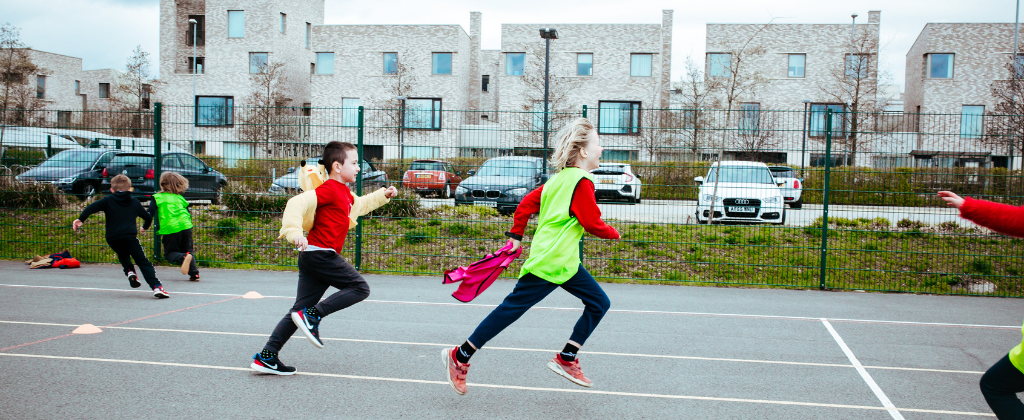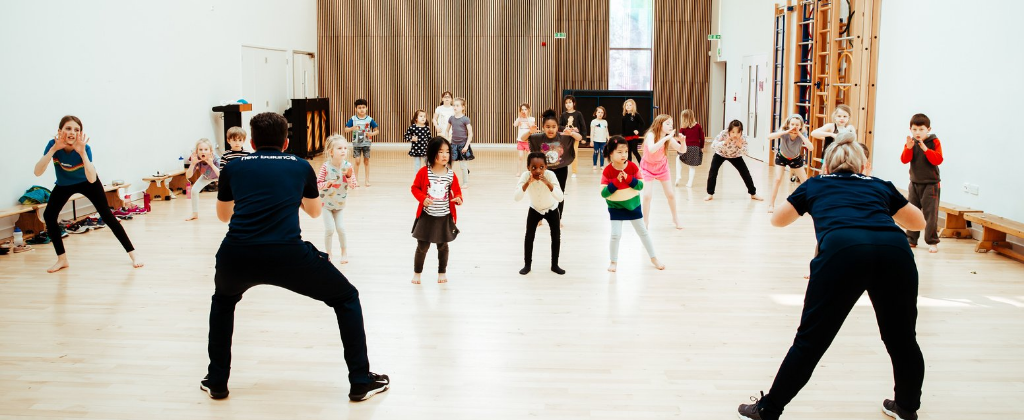How physical activity improves pupils’ concentration and behaviour in class
We’ve traditionally thought of physical exercise as being key to physical fitness and our overall physical health. After all, people who regularly perform physical activity are preventing illness, strengthening bones and muscles as well as managing weight.
But what if exercise can improve more than just our physical health, and can in fact have a positive impact on our cognitive performance? In terms of children attending school – can it help them perform better academically, improving concentration and even improving behaviour in schools?
We look at the benefits of exercise and physical fitness on primary school children, and how incorporating moderate physical activity into each day is important.
The importance of concentration in primary school
Busy schedules and a focus on academic achievement are often blamed for the decline in physical fitness in primary schools. Yet there is evidence to suggest that regular exercise brings substantial cognitive benefits, particularly when exercising in the morning. Plus, with more than a quarter of children leaving primary school obese, there is clearly an opportunity for effective physical activity sessions and PE lessons to take a more prominent position within the first half of the daily timetable.
Why should children exercise?
The benefits of exercise for children are widely documented. Sporting activities have a positive effect on mood, self-esteem and mental health, alleviate anxiety and depression, and long-term, help to improve aspirations, personal PE development and leadership skills. It also helps pupils to focus and avoid getting overly distracted.
Young people who participate in sport demonstrate lower rates of anti-social behaviour, an improved average attention span, and better classroom attendance. Plus, physical activity is a natural stress reliever, creating calmer, happier students.
What happens when we exercise in the morning?
There is mounting evidence to show that exercising in the morning has a greater benefit on pupil’s cognitive abilities and academic performance than physical activity in the afternoon.
Improved productivity
With increased blood flow around the body, more oxygen is carried to the brain, which improves focus. Plus, the release of endorphins gives a surge of energy at the start of the day. This can also help children with learning difficulties to focus and ignore classroom distractions caused by classmates.
Increased cognitive function
Exercise boosts the production of cells in the hippocampus – the part of the brain responsible for memory and learning. Exercise also improves neurogenesis, the process through which new neurons are formed in the brain, supporting decision making and learning.
When it comes to enhancing brain health and brain function, exercise must be a key priority in schools. Regular physical activity appears to be no brainer…

Improved mood
Endorphins, produced during exercise, reduce feelings of stress and anxiety, making children feel happier and have improved self perception. Achieving goals early in the day can also help to give children a feeling of accomplishment, boosting self-esteem and confidence for the rest of the day.
More energy
Exercise improves blood flow and provides oxygen and nutrients to muscle tissue. This results in increased energy levels in the body, making children feel more ready to engage and participate in the day ahead. It will also increase clarity and attention span, improving the learning outcomes for the day.
Boosted metabolism
A boosted metabolism helps to regulate the appetite-stimulating hormone and ghrelin, making pupils less likely to snack or crave unhealthy, sugary foods. The effects of the increased metabolism can last for 12 hours, helping them throughout the entire day.
These benefits demonstrate the power of physical activity, but in order to achieve maximum concentration, what else do we need to consider?
What do we need in order to concentrate?
In order to have good concentration levels we need to have sustained attention, which enables us to focus and ignore distractions, and sound executive function, which gives us the ability to think and make decisions.
Improved focus in pupils has many benefits. It can improve academic achievement, better decision-making, and prolonged attention span. Concentration can be boosted by a number of factors, such as keeping well hydrated, eating a healthy, balanced diet, eliminating distractions, and getting a restful night’s sleep.

How does physical activity improve concentration?
Regular physical activity improves concentration skills; whether it’s playing team sports, learning new skills, or simply a game of tag.
Children are more alert after exercise, which is what improves concentration. Sports that require decision-making help to activate the mind, which primes the brain to pay attention for longer. Studies show that primary and middle-school-age children gain the most benefit, in terms of enhanced cognitive function.
Just ten minutes of organised physical activity incorporated into the day improves behaviour. If physical education sessions are in the morning, they set the child up for a better day.
There is evidence to show that pupils who do more physical activity are likely to have stronger self-control, which can help their education. They have better control of their emotions, meaning fewer mood swings or emotional outbursts, thus making behaviour management easier for teachers. On top of this, learning proceeds more rapidly.
Young people with higher levels of fitness demonstrate better concentration.
Just ten minutes of organised physical activity incorporated into the school day improves behaviour. If physical education sessions are in the morning, they set the child up for a better day.
How physical activity improves wellbeing and behaviour among pupils
Disruptive behaviour can be a major challenge for many teachers, who find that their lessons are regularly interrupted, detrimentally impacting other pupils. With this in mind, there won’t be a school out there that doesn’t want to implement activities to improve behaviour in the classroom.
Exercise can improve behaviour as well as mental health, promoting greater wellbeing overall. Not only does it help to reduce stress levels, helping pupils to better cope with daily challenges, it can help children to manage their emotions.
How does physical activity affect behaviour?
Sport as part of the the school timetable provides a much-needed outlet for excess energy and aggression. Regular exercise can help children channel their energy in a more productive and controlled manner, reducing the likelihood of aggressive or impulsive behaviour.
Consistent participation in physical activities teaches children the value of practice, commitment, and self-discipline. These qualities can transfer to other areas of life, including their behaviour in the classroom.
How can schools improve concentration and behaviour in their pupils?
There are several strategies that can increase physical activity in pupils, boosting concentration levels and improving the learning process.
1. Move it to the morning
If not already held in the earlier parts of the school day, PE lessons should be moved to the morning so that pupils can enjoy the benefits that come with physical activity before lunchtime.
2. More frequent PE lessons
Most primary age children have one weekly PE lesson. Is there room in the timetable for a second PE session? Or, if not already incorporated, could a forest classroom session be held weekly, giving an opportunity for children to break from the typical classroom setting, connect with nature and be active whilst getting fresh air?
3. Create active environments
The more stimulating the surroundings, the more likely the children are to engage. Ensure that play areas, playgrounds and sports fields feature a range of challenging equipment.
4. Offer access to skills
No matter how skilled teachers are, they cannot always be equipped to teach any and every subject. And, especially at KS1 and KS2, having a dedicated in-house PE specialist isn’t always viable.
However, this doesn’t have to mean that primary schools go without physically challenging, varied, and engaging lessons. Organisations such as Premier Education can provide a fully qualified resident coach to deliver PE lessons and physical activity sessions, including before- and after-school clubs.
5. Offer choice and variety
Offering a varied mix of physical activities will bring about better engagement and enthusiasm, as well as greater opportunities for participation. Different activities such as team sports, gymnastics, ball games, and even free play allow for growth in a variety of areas such as cognitive, confidence, leadership, and teamwork benefits.
6. Develop a ‘whole community’ approach
Recruit everyone from staff, students, parents, governors, and external suppliers to embrace the opportunity to communicate the benefits of physical activity, especially in the morning. Support teachers to find fun and interactive ways to incorporate fitness into the curriculum, review the play equipment offered by your school and use assemblies and newsletters to communicate the importance of living a healthy, active life.
If schools are proactive in setting the pace, it will motivate the children to live a more active lifestyle and inspire better learning.

7. Have a breakthrough at break time
Breaktimes naturally present an opportunity for children to play. But is there enough on offer to encourage them to be physically active?
- Is equipment left out?
- Is there a sufficient range of play apparatus on offer?
- Is the natural environment sufficiently incorporated into the play area?
- Is there enough space?
If children are able to play imaginatively and freely, they are more likely to develop their own games and keep more active. This is especially important as just 10 minutes of playful coordination can improve concentration and attention span.
8. Set healthy homework
The appetite for exercise shouldn’t end with the school day. Parents should be encouraged to organise physical activities for children during the mornings, over weekends and holidays. Alternatively, schools can offer exciting after-school clubs which keep children dancing, running, competing, and developing skills such as hand-eye coordination and teamwork after hours.
The appetite for exercise shouldn’t end with the school day. Parents should be encouraged to organise physical activities for children during the mornings, over weekends and holidays. Alternatively, schools can offer exciting after-school clubs which keep children dancing, running, competing, and developing skills such as hand-eye coordination and teamwork after hours.

Need active inspiration? We can help
Activity at school is our specialism, so we believe that it deserves more than an after-thought. Our expert coaches have been trained in a variety of sports to help engage and inspire even the most sport-hesitant child.
Looking for PE planning ideas? Look no further. Want to promote greater wellbeing at school? Check out this blog.

